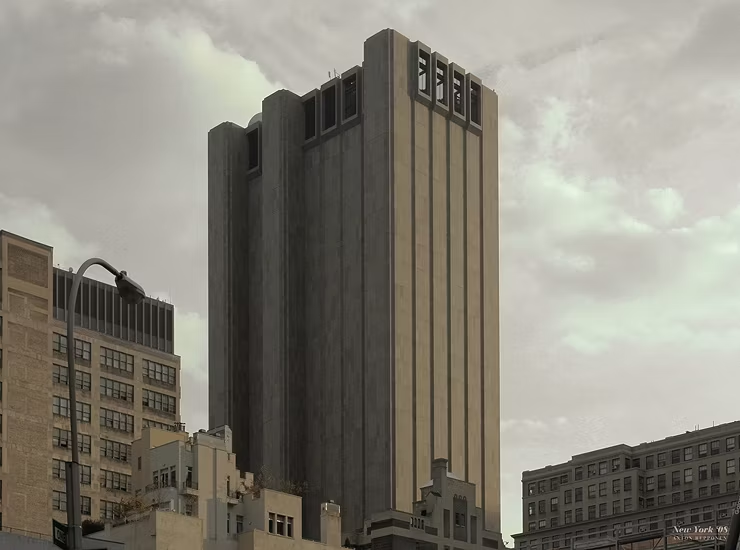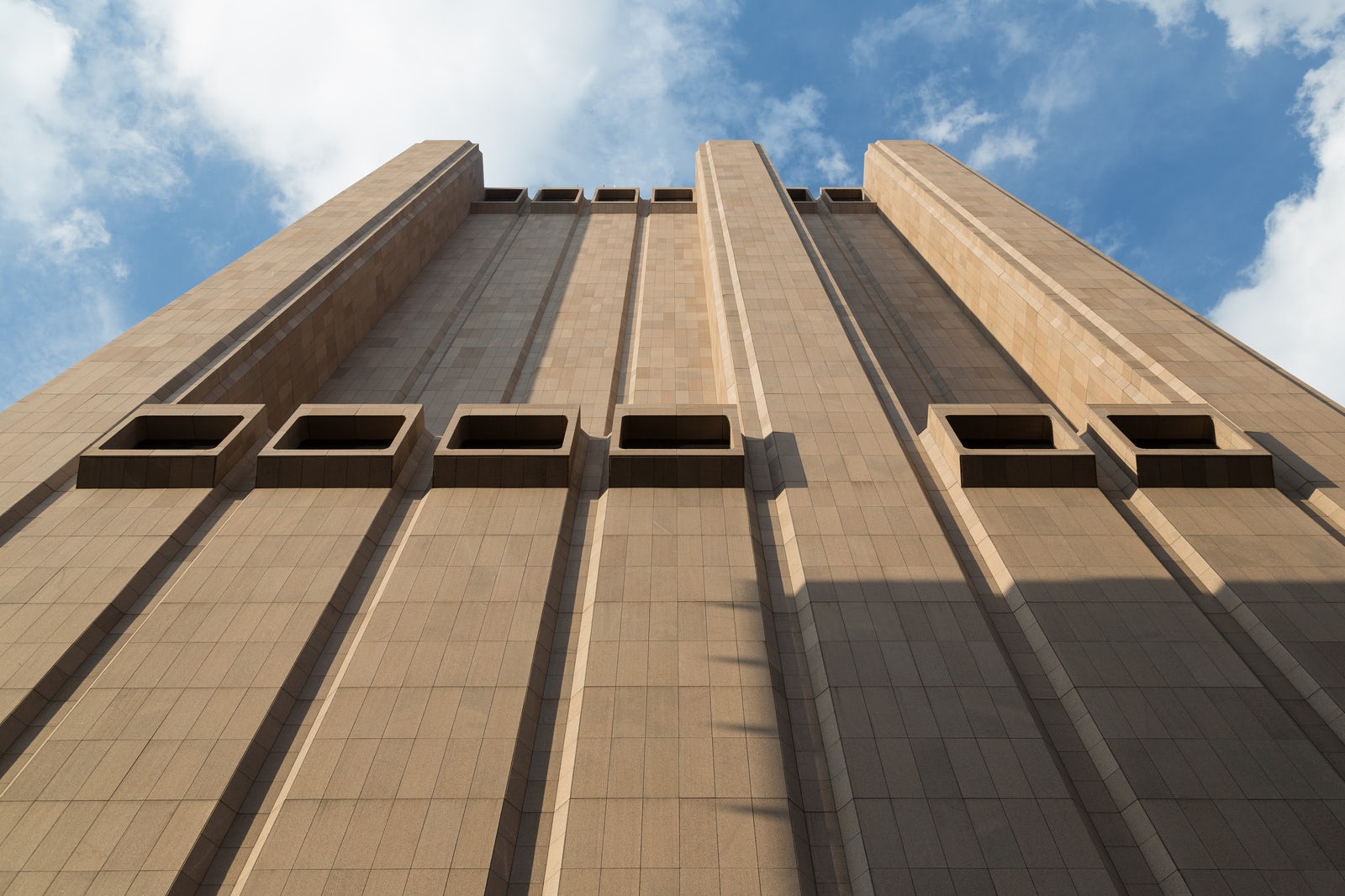One of New York City’s most compelling pieces of Brutalist architecture — the “AT&T Long Lines Building” located at 33 Thomas Street — has been revealed, in an investigative piece by The Intercept, to be one of the National Security Agency’s central spy hubs in the US.
Built in 1974 by the esteemed modernist architect John Carl Warnecke, the windowless 29-story skyscraper resembles more an urban fortress than an office building. Its heavy granite massing and long articulated lines signature of its façade evoke at once an insular but menacing quality, standing in stark contrast to many of the lithe and transparent structures that surround the Downtown Manhattan site.

Image via Flickr / © Anton Repponen
In a 1982 overview of Tribeca’s architecture for the New York Times, Paul Goldberger praised the structure as “one of the neighborhood’s few pieces of good modern architecture” but agreed it resembles “more … a mammoth piece of equipment than a conventional building.” Intended to house one of the country’s most critical telecommunications operations, the processing of long-distance phone calls operated by the AT&T subsidiary New York Telephone Company, the building both obscures and communicates its function through the industrial qualities of its façade.

Image via Flickr / © David Schalliol
Indeed, The Intercept’s article includes a quote from Warnecke detailing his vision for the building, describing a “20th-century fortress, with spears and arrows replaced by protons and neutrons laying quiet siege to an army of machines within.” It comes as little surprise, then, that a building that wears its requirement for advanced security and anonymity so plainly would be the center of one of the US government’s most covert surveillance operations.
Evidenced by a number of documents leaked by NSA whistleblower Edward Snowden to journalists at The Intercept, the political media site has gathered a strong case indicating the Long Lines Building — listed under codename TITANPOINTE in these documents — has functioned as “a core location used for a controversial NSA surveillance program that has targeted the communications of the United Nations, the International Monetary Fund, the World Bank and at least 38 countries, including close US allies such as Germany, Japan and France.”

Image via Flickr / © s o d a p o p
“It has long been known that AT&T has cooperated with the NSA on surveillance, but few details have emerged about the role of specific facilities in carrying out the top-secret programs,” the report continues. “The Snowden documents provide new information about how NSA equipment has been integrated as part of AT&T’s network in New York City.” The NSA’s alleged utilization of such large-scale American communications networks provides unsettling insight into how the NSA and AT&T might be encroaching, not only on the privacy of foreign subjects but additionally on the privacy of US citizens.
If one were to imagine what a fictional and sensationalized hub of deviant government activity might look like, Warnecke’s AT&T building would certainly fit the bill. Perhaps its candor has always been its greatest disguise. Wouldn’t a building that so obviously aims to protect itself from prying eyes be too much of a formal tip-off to actually prove an effective mask? Perhaps our contemporary understanding of the technological infrastructure of the future wouldn’t be quite as physically altering to our environments as it was imagined to be in the ’70s has aided in the burying of this building’s true identity. It turns out that it is precisely the infrastructure that is unseen — existing in the virtual realm or in isolated data centers — that pervades and controls our society.
While the AT&T Long Lines Building’s formal achievements might make it — to quote Goldberger — one of the “few pieces of good modern architecture,” in Downtown Manhattan, these emerging revelations 42 years after its inception give more complicated and sinister attributions to this signature landmark.
Read the full feature on The Intercept for the detailed report on their findings.




